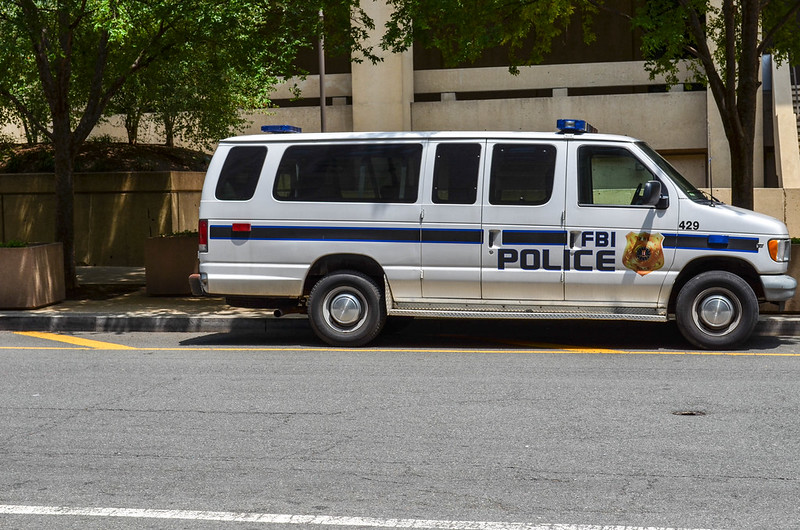The journey to the writing of my most recent book, Double Crossed: The Failure of Organized Crime Control, began in 1983 when I was in Washington, DC. I was able to interview an assistant counsel for the Reagan Commission on Organized Crime, which had recently been set up and was about to begin three years of hearings.
I first asked him about how the commission was going to approach the issue of corruption and organised crime. Every competently researched study had demonstrated that the two phenomena were inextricably intertwined. The counsel, however, started to get irritated. He said that the commission was only going to investigate organised crime; ‘corruption’, he said, was for others to look at. I then asked him about prison gangs. I thought the question was not unreasonable since, weeks earlier, President Ronald Reagan’s attorney general had identified prison gangs such as Nuestra Familia and the Aryan Brotherhood as among the most significant ‘emerging organized crime threats’. He refused to answer and suggested that the interview was over. I was only able to stay in the room by switching the questioning to Triads, a safely foreign ‘emerging organized crime’ threat.
The Reagan commission’s main achievement was in making anti-money laundering a key component in organised crime control strategy. Its first report included a draft of the Money Laundering Control Act of 1986. This insisted that it was the government’s intention to protect the financial community rather than police it. Money laundering, it argued, had a damaging effect upon the financial community. As a result, bankers were deputised as sheriffs to stem the flow of ‘dirty’ money into their institutions as the key component of what became an international anti-money laundering regime.
The Reagan commission’s main achievement was in making anti-money laundering a key component in organised crime control strategy
Three decades later, this effort has achieved very little. There are regular reports of major banks found to be involved in the laundering of criminal profits, see, for example, the Bank of New York and HSBC. Money managers have since proliferated and make it easy to clean dirty money. There are also ‘secrecy havens’ dotted around the world with the potential to protect the ill-gotten gains of every possible variety of organised criminal, operating from anywhere in the world. Despite the good intentions of the effort, anti-money laundering laws and practices can be evaded by simple processes that could begin with the words ‘offshore banking’ typed into a search engine. UK governments in recent decades, with their failure to manage their overseas territories and Crown dependencies, bear much responsibility for this kindness to criminals.
In Double Crossed and my earlier book Gangster Capitalism (2005) I offer a history of organised crime that explains how fables woven round the careers of Depression-era gangsters were circulated by opportunistic politicians and career bureaucrats, notably Harry Anslinger of the Federal Bureau of Narcotics and the FBI’s J Edgar Hoover, to distract attention from failed moral reform policies and corruption in high places.
Organised crime mythology always had a function — Al Capone mythology justified the federal government moving into law and order matters previously reserved to the individual cities and states. Lucky Luciano mythology helped justify the Boggs act of 1951 that introduced the concept of mandatory minimums for drug offenders into law and thus paved the way for the mass imprisonment of recent decades. Luciano mythology also lay behind the Organized Crime Control Act of 1970, which was the template not only for organised crime control efforts in the US itself but also for similar efforts around the world. Meyer Lansky mythology was at its peak during the 1970s and in the run-up to the Reagan Commission’s hearing. This helped justify the US and international response to money laundering.
US government thinking on organised crime has been clouded by repeated misrepresentation and obfuscation
I believe that US government thinking on organised crime has been clouded by repeated misrepresentation and obfuscation. The understanding of organised crime today has been predefined by the likes of media mogul William Randolph Hearst (heavily influenced by Benito Mussolini’s mythical successes against the mafia), US politician Estes Kefauver, Harry Anslinger, J Edgar Hoover (after 1963) and Richard Nixon — all were ill-informed enough to claim that a ‘monolithic’ conspiracy of Italians – the mafia – controlled organised crime in America and therefore constituted a national security risk. These long-dead men helped set organised crime control policy in stone yet they were never required to support their nonsensical claims.
However hard-working and well-intentioned present-day law enforcers are, they are hamstrung by predefinitions and deep-rooted but wrong-headed assumptions in their government bureaucracies.
A simple search of the FBI’s website will confirm that the US government is still conveniently externalising its organised crime problem. Clicking on the section called ‘Organized Crime’ gets you straight to ‘Transnational Organized Crime’ and includes detail on plenty of foreigners but few, if any, organised criminals born or nurtured within the US, aside from some reference to ‘La Cosa Nostra’ families. So, in a nation of 300 million people, which includes thousands of home-grown organised criminal networks, including many white Anglo-Saxons, the FBI website chooses not to draw attention to groups indigenous to the US involved in present day organised crime.
Organised crime control policies need to be constructed again from scratch
I would advocate that organised crime control policy needs to be based on reducing the extent of criminal networks and taking away opportunities for successful illegal activity. A start could be made by smarter checks and balances on business behaviour accompanied by a complete overhaul of current drug prohibition policy, minimising rather than maximising the harm that some substances can cause.
Since the Reagan Commission issued its reports in the 1980s, the US has given the rest of the world the idea that US organised crime control policies have ‘have contained or marginalized its organized crime problem’. I would suggest ‘normalised’ as more accurate. Rich countries like Britain and poor countries like Mexico and Jamaica have sadly followed an organised crime control template that was made in the US and built on xenophobic conspiracy theories. Organised crime control policies therefore need to be constructed again from scratch and built strictly on evidence and rational thought. The aim should be to decrease, rather than increase, corrupt possibilities.
Michael Woodiwiss is a Senior Lecturer at the University of the West of England. He has written, edited and co-authored many books and articles covering topics such as bootlegging, drug trafficking, criminal money management, official corruption and many types of corporate and financial crime.
Main image credit: mo1229, via Flickr.
The views expressed in this article are those of the author(s) and do not necessarily reflect the views of RUSI or any other institution.



